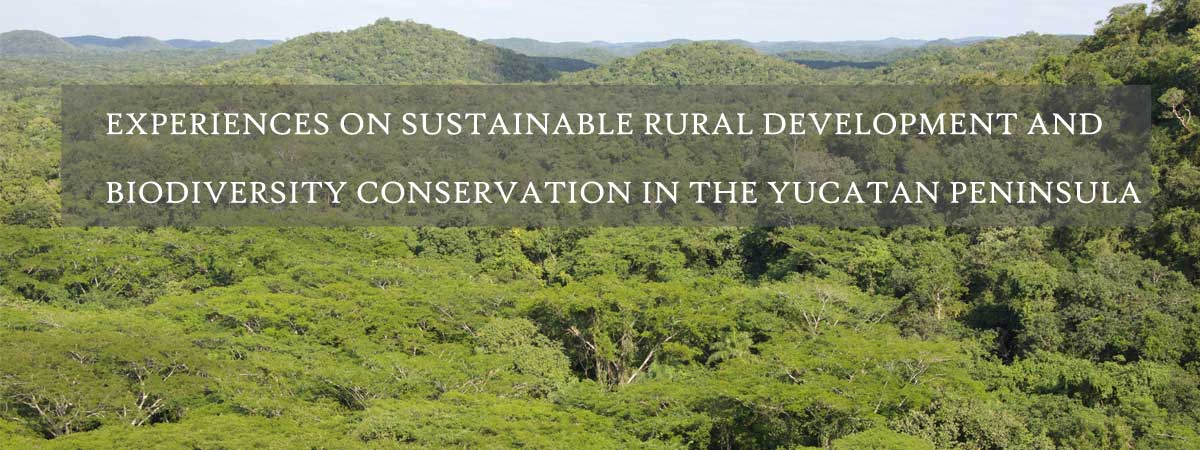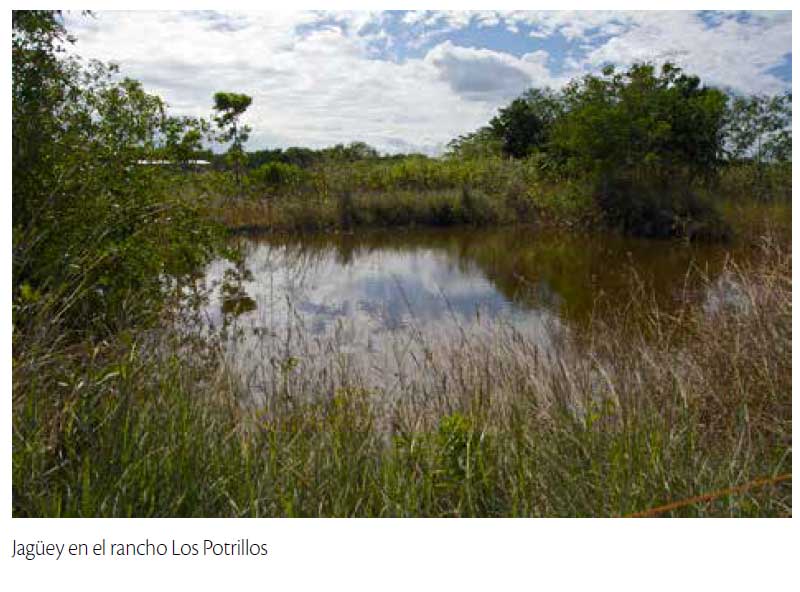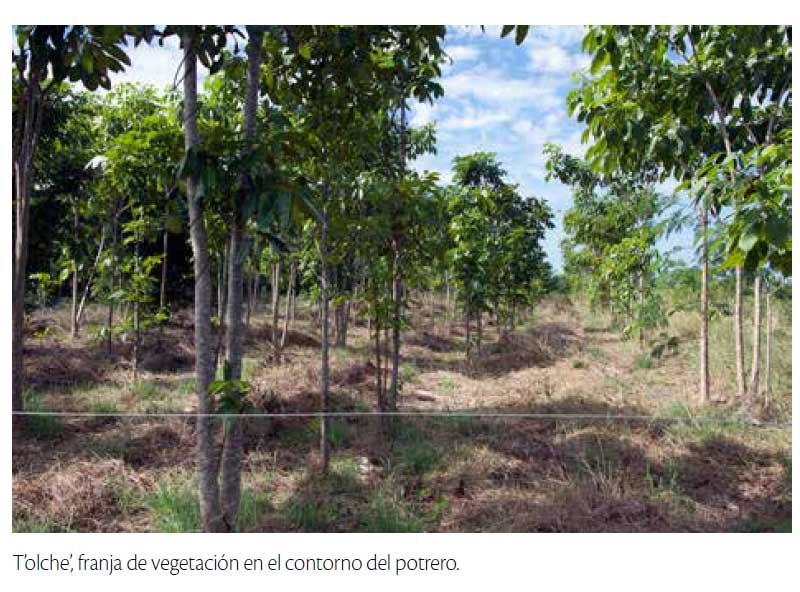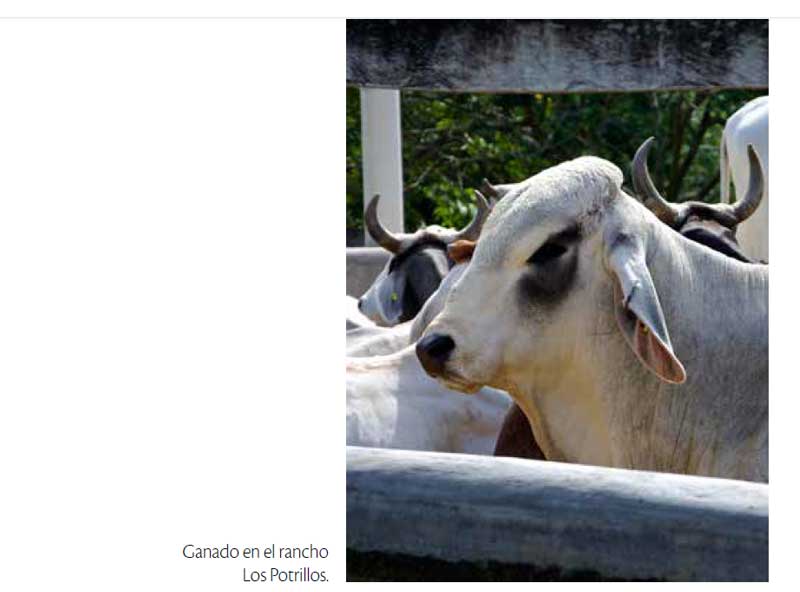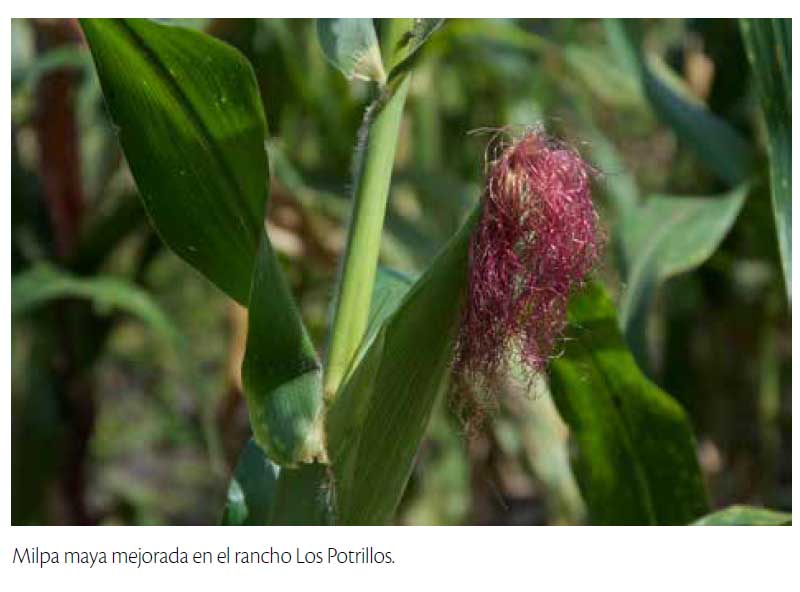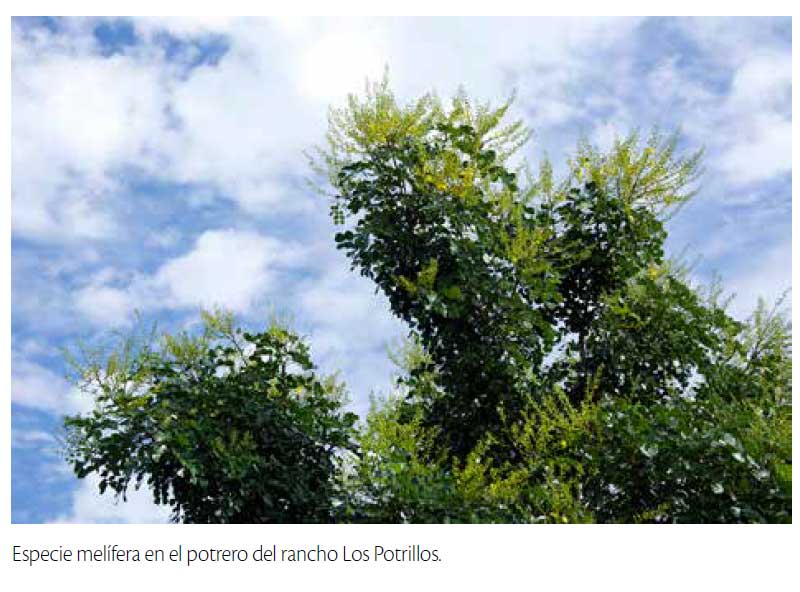Silvopastoral systems in southern Yucatan: Rancho Los Potrillos

In 2004, CONAFOR initiated a national program to strengthen forest management and incentivizing formal organization of forest producers. In this context, Nukuch K'áax was created, initially an organization composed of a small group of livestock producers, who began to spread agrosilvopastoral practices from farmer to farmer with field demonstrations in Southern Yucatan. In 2006, civil association Nukuch K'áax is created with a clear mission: to generate a culture of conservation and entrepreneurship as a development mechanism in rural populations of the region. The number of producers signing up for the proposal began to grow. In addition to providing advice and monitoring projects among members, the association promotes the National REDD+ Strategy, promoting silvopastoral systems, improved milpa systems and sustainable forest management as practices that reduce deforestation. Currently, Nukuch K’áax is integrated by 32 ejidos, five small land owners and three groups of organized women. In 2011, a forest survey was conducted in the region known as UMAFOR 3106, and included ten municipalities where Nukuch K'áax operates. Satellite images from 1978, 1988, 2000 and 2008 were analyzed for this study. The results show that a little over 30 years ago a major process of deforestation began, having 81% of forest cover in 1978 and 54% in 1988. This period coincides with the National Clearing Programme, but it was discontinued in the 1980s. By 2000, the forest cover had recovered up to a 75%, and had a small fall to 73% in 2008 (Bioasesores 2011). "However”, says José Jeremías Palomo Kú, now president of Nukuch K’áax, “while many pastures were abandoned and forest cover has been recuperated, many species have disappeared." While walking through his ranch, Los Potrillos, he speaks: "When I entered this field 10 years ago this was an acahual that I have been knocking down in order to establish grass, because my plan was to work as it was done 40 years ago. But over time I changed the vision, and moved from promoting extensive ranching to silvopastoral systems; I began incorporating huaxín trees (Leucaena leucocephala), and in the borders of the trails I was leaving swaths of t'olche'". In 2013, through the Mexico REDD+ Alliance, TNC supported a project with Nukuch K'áax to implement silvopastoral demonstration plots in five ejidos: Xul, San Juan, Becanchén, Ek Balam and San Isidro, which added to the practices already started in Los Potrillos ranch. These plots are having a positive impact on the region, as other producers begin to show interest in the proposal. This is because, during the time of drought, huaxín is a good forage supply that adapts to environmental conditions, and this is reflected in animal weight gain. Livestock graze the shrube when it is about one meter high, and if any given tree has dominance, the idea is to leave it to serve as seed source. Furthermore, in agriculture they have worked on an improved Mayan milpa system using organic fertilizers, planting furrows and rotating crops, among other practices. "Back in the day I only thought of doing large pastures", says Palomo, "because I thought I was saving on work, the cows were grazing for a month and a half and I did not need to go every day to the ranch. Eventually I realized that the opposite was true, if we want to make sustainable animal husbandry and not have a degraded pasture, we have to target small paddocks and make a constant grazing rotation. For this it is useful to have an electric fence, allowing switching of grazing sites daily. But it is not only about implementing some of these changes, a silvopastoral system has many components, such as huaxín lines, the cultivated t'olche' and natural regeneration, rotational grazing and implanted pastures, among other practices, because as the name suggests, it is a system".
The change is already seen in Los Potrillos Ranch: the cattle does not lose weight, and it is not necessary to buy balanced food during the dry season. The vision is that the ranch is self-sustaining, and as a system, agriculture is a component. Palomo said that when his grandparents cultivated the milpa they left a swath of trees that served as protection against strong winds, and also to be a source of regeneration of forest species jabín (Piscidia piscipula) or tzalam (Lysiloma latisiliquum). "By encouraging t'olche' we invest in the future," says Palomo, "because the species that manage to develop will serve as fodder, fuel, food, shade, niches for birds and beneficial insects, and also we can extract plants useful as food, medicine and for construction".
In the words of José Jeremías Palomo Kú, "we do not have much to teach the farmers but we do need to remind them; because our ancestors originally planted one hectare of Mayan milpa, not in ten or twenty. In that hectare they grew maize, beans, Lima beans, pumpkin, sweet potato; they had at least ten or fifteen crops. The benefit is always present when you put a tree on the ground".
Increased production per hectare, along with the planting of trees as an essential component of the ranching landscape, reduces the pressure on the forest that is still very well represented in this area. Farmers stop seeing the forest and the trees as an enemy of productivity, and prove that a higher yield can be achieved with relatively simple changes in management practices and that deforestation of a greater amount of hectares for grazing is unnecessary.
Bibliografía Bioasesores AC, 2011. Estudio regional forestal, Unidad de Manejo Forestal 3106. SEMARNAT, CONAFOR, Nukuch K’áax AC, Yucatán, México. 556 p. |
